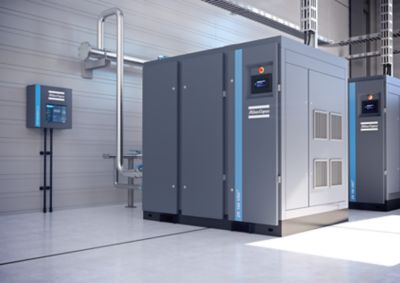Understanding PSI, PSIA, and PSIG
If you regularly work with compressed air for industrial purposes, you are likely familiar with the term PSI. However, if you’re relatively new to the world of compressed air, this guide will help you understand the fundamental differences between PSI, PSIA, and PSIG, and how these measurements are applied in various industries.
Air compressors provide pressurized air for various industrial applications and needs. Pressure is measured in PSI and indicates the maximum pressure an air compressor generates. PSI is often in combination with the supply metric CFM (Cubic Feet per Minute).
However, multiple factors influence the air pressure measurements of an air compressor, including altitude and geographic location. We recommend seeking expert advice before attempting adjustments on your own to ensure optimal performance.
What is the difference between PSI, PSIA and PSIG?
PSI - Pounds per square inch
PSI is a widely used unit of pressure measurement that indicates the force exerted per square inch of an area. For instance, when inflating a car tire, PSI measures the air pressure inside the tire. PSI is specific to non-SI industrial and technical purposes such as tire pressure, fuel storage and distribution, and wastewater management. For example, an air compressor output rated at 500 PSI means it provides 500 pounds of pressure per square inch.
PSIA - Pounds per square inch absolute
Also referred to as total pressure, PSIA refers to pressure relative to zero or a perfect vacuum. In a vacuum, if a tire were empty of air, it would measure 0 PSIA.
PSIA measurement includes atmospheric pressure in its reading. At sea level, the atmospheric pressure is approximately 14.7 PSI, so a reading of 30 PSIA includes this atmospheric pressure.
PSIG - Pounds per square gauge
PSIG measures the pressure relative to the ambient atmospheric pressure. Unlike PSIA, PSIG does not account for atmospheric pressure. Therefore, PSIG is always lower than PSIA by the amount of ambient atmospheric pressure.
For instance, a vessel completely void of any air molecules at sea level would read roughly -14.7 PSIG, and ambient air pressure is always measured as 0 PSIG.
Calculations for PSI, PSIG, PSIA
Using these formulas, you can easily convert between PSIA and PSIG if you know the atmospheric pressure at your location.
PSIG is always lower than PSIA.
The formulas used to describe the relationship are:
- PSIA = PSIG + 1 ATM
- PSIG = PSIA - 1 ATM
(where ATM is atmospheric pressure)
Related articles
22 tháng tư, 2022
Để hiểu rõ nguyên lý của khí nén, một vài giới thiệu cơ bản về hiện tượng vật lý sẽ giúp ích rất nhiều. Tìm hiểu xem về nhiệt động lực học và vì sao nó rất quan trọng trong việc hiểu cách thức hoạt động của máy nén khí.
21 tháng tư, 2022
Khí ni-tơ ở trong không khí xung quanh chúng ta. Nó là thành phần lớn nhất trong không khí mà chúng ta hít thở, nhưng chúng ta không sử dụng nó. Trong bài viết này, chúng ta sẽ tìm hiểu một số trong nhiều ứng dụng có sử dụng khí ni-tơ.
26 tháng tư, 2022
Để hiểu hoạt động của khí nén, một giới thiệu cơ bản về vật lý có thể đi một chặng đường dài. Tìm hiểu thêm về nhiệt động lực học và tầm quan trọng của trong việc tìm hiểu cách thức hoạt động của máy nén khí.

